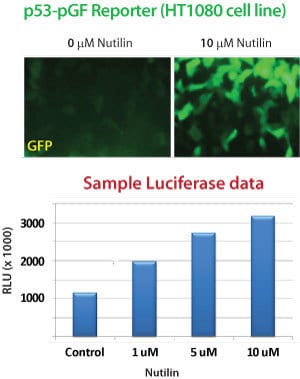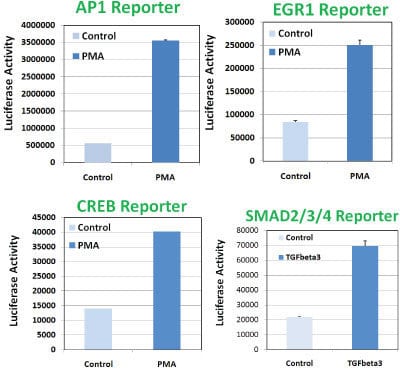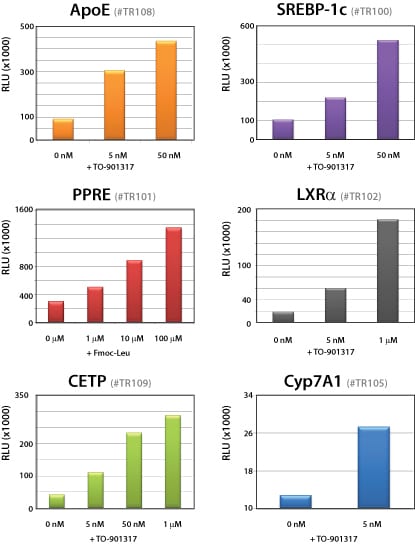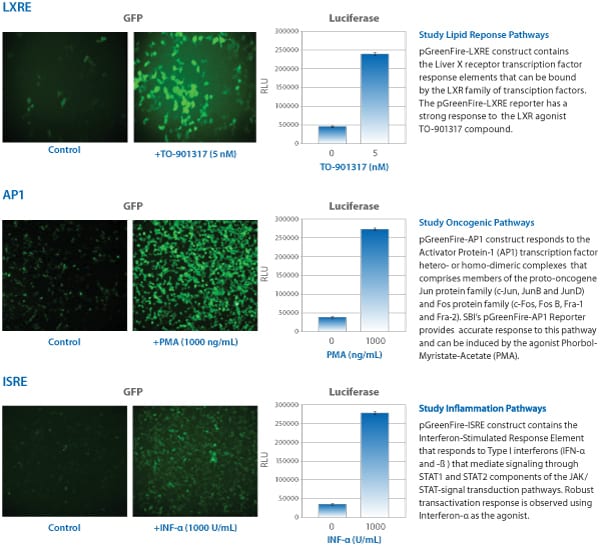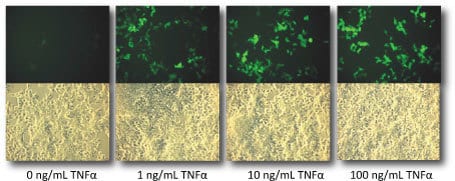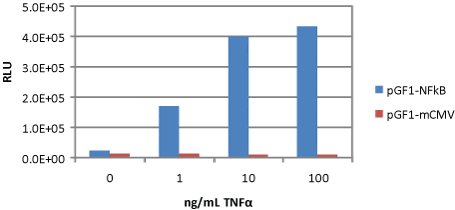pGF-CREB-mCMV-EF1α-Puro Onco-Response Reporter Lentivector
- Sort responsive cells with dscGFP
- Measure activity with luciferase
- Leverage SBI’s highly-regarded lentivectors
- Create stable signaling pathway reporter cell lines
- Introduce reporters into difficult-to-transfect cell types, including primary and non-dividing mammalian cell lines
Products
| Catalog Number | Description | Size | Price | Quantity | Add to Cart | |||
|---|---|---|---|---|---|---|---|---|
| TR202a-p | pGF-CREB-mCMV-EF1α-Puro (293 stable cell line) | 2 x 10^6 Cells | $3299 |
|
||||
| TR202pa-p | pGF-CREB-mCMV-EF1α-Puro (plasmid) | 10 µg | $779 |
|
||||
| TR202va-p | pGF-CREB-mCMV-EF1α-Puro (virus) | >2 x 10^6 IFUs | $779 |
|
||||
Overview
Overview
Monitor oncogenic signaling in real time
With SBI’s line of pGreenFire1 Pathway Reporters, you can monitor signal transduction in real time. These vectors leverage our reliable lentivector technology and save you time—our pre-built signal transduction pathway reporters come as ready-to-package lentivector plasmid*, ready-to-transduce pre-packaged lentivirus, and as a ready-to-study cell line. The pGF-CREB-mCMV-EF1α-Puro Lentivector co-expresses a destabilized copepod GFP (dscGFP; 2-hour half-life) and luciferase from CREB transcriptional response elements (TREs) paired with a minimal CMV promoter (mCMV). The mCMV promoter alone delivers negligible expression, but when downstream of CREB TREs, drives expression of dscGFP and luciferase in response to CREB activity. The result is the ability to quantitatively measure CREB activity at CREB TREs by fluorescence and luciferase activity.
- Sort responsive cells with dscGFP
- Measure activity with luciferase
- Leverage SBI’s highly-regarded lentivectors
- Create stable signaling pathway reporter cell lines
- Introduce reporters into difficult-to-transfect cell types, including primary and non-dividing mammalian cell lines
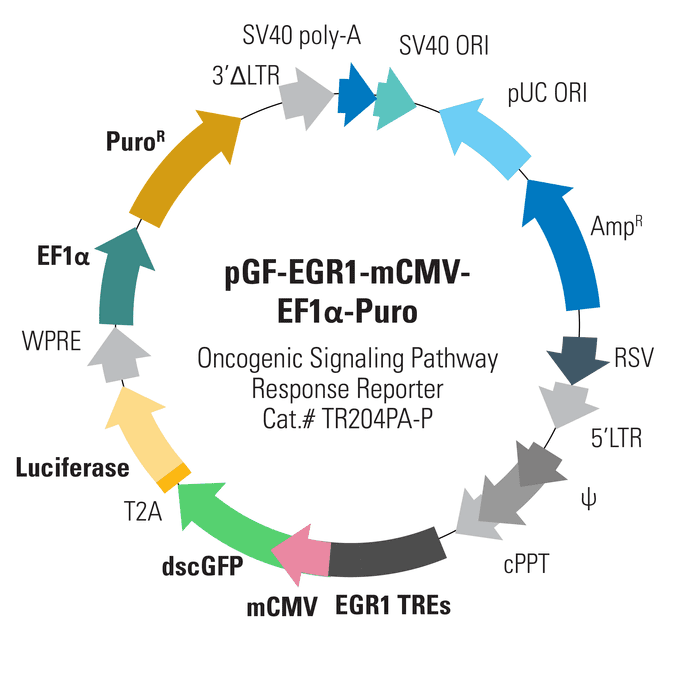
The pGF-CREB-mCMV-EF1α-Puro Lentivector is available as a lentivector, pre-packaged virus, and a stable cell line created from the pGF-CREB-mCMV-EF1α-Puro Lentivector transduced into 293 cells.
*Please note that these vectors only function properly when transduced. Transfection keeps the constitutive RSV promoter intact, leading to nonspecific expression of the reporter genes.References
How It Works
Supporting Data
FAQs
Resources
Citations
Related Products
Products
| Catalog Number | Description | Size | Price | Quantity | Add to Cart | |||
|---|---|---|---|---|---|---|---|---|
| TR202a-p | pGF-CREB-mCMV-EF1α-Puro (293 stable cell line) | 2 x 10^6 Cells | $3299 |
|
||||
| TR202pa-p | pGF-CREB-mCMV-EF1α-Puro (plasmid) | 10 µg | $779 |
|
||||
| TR202va-p | pGF-CREB-mCMV-EF1α-Puro (virus) | >2 x 10^6 IFUs | $779 |
|
||||
Overview
Overview
Monitor oncogenic signaling in real time
With SBI’s line of pGreenFire1 Pathway Reporters, you can monitor signal transduction in real time. These vectors leverage our reliable lentivector technology and save you time—our pre-built signal transduction pathway reporters come as ready-to-package lentivector plasmid*, ready-to-transduce pre-packaged lentivirus, and as a ready-to-study cell line. The pGF-CREB-mCMV-EF1α-Puro Lentivector co-expresses a destabilized copepod GFP (dscGFP; 2-hour half-life) and luciferase from CREB transcriptional response elements (TREs) paired with a minimal CMV promoter (mCMV). The mCMV promoter alone delivers negligible expression, but when downstream of CREB TREs, drives expression of dscGFP and luciferase in response to CREB activity. The result is the ability to quantitatively measure CREB activity at CREB TREs by fluorescence and luciferase activity.
- Sort responsive cells with dscGFP
- Measure activity with luciferase
- Leverage SBI’s highly-regarded lentivectors
- Create stable signaling pathway reporter cell lines
- Introduce reporters into difficult-to-transfect cell types, including primary and non-dividing mammalian cell lines

The pGF-CREB-mCMV-EF1α-Puro Lentivector is available as a lentivector, pre-packaged virus, and a stable cell line created from the pGF-CREB-mCMV-EF1α-Puro Lentivector transduced into 293 cells.
*Please note that these vectors only function properly when transduced. Transfection keeps the constitutive RSV promoter intact, leading to nonspecific expression of the reporter genes.

